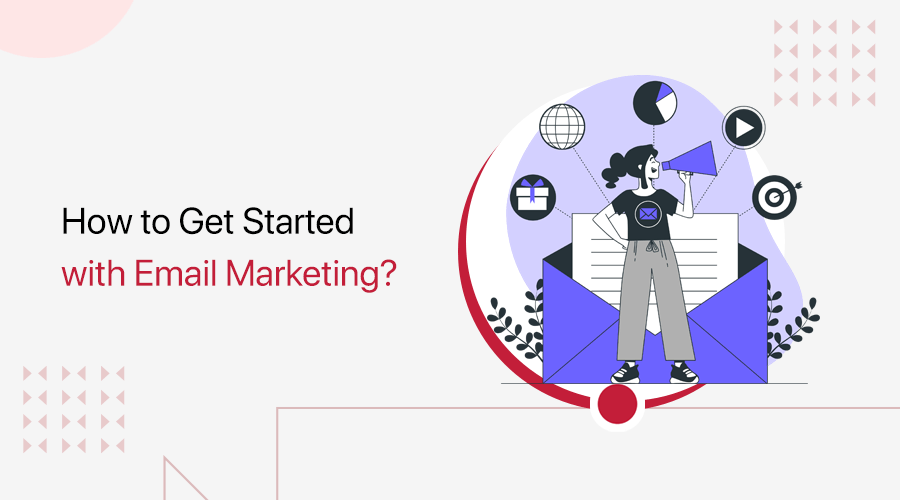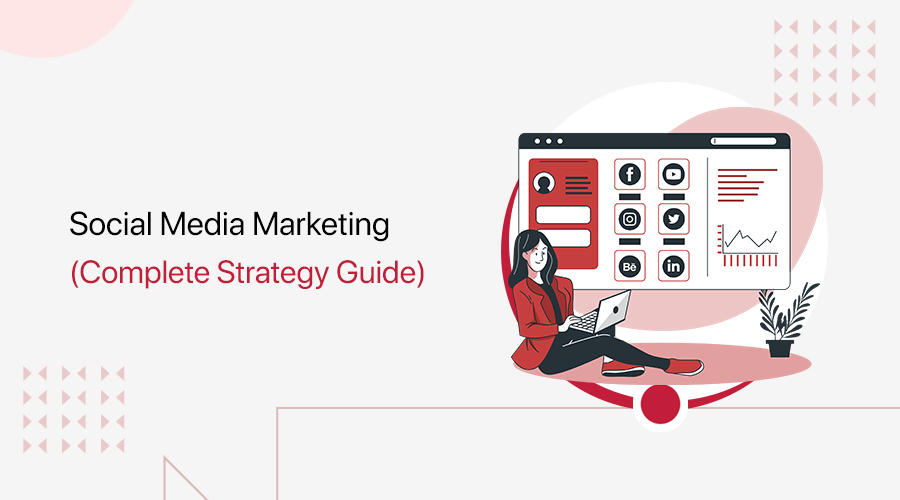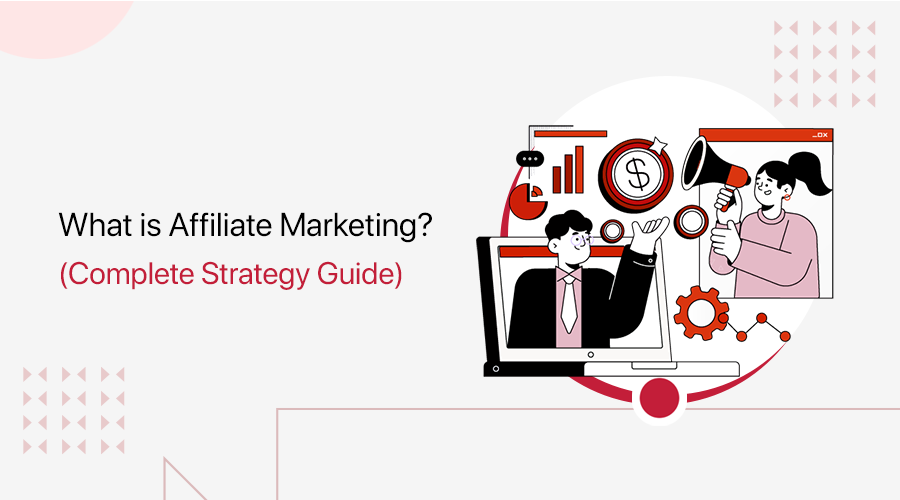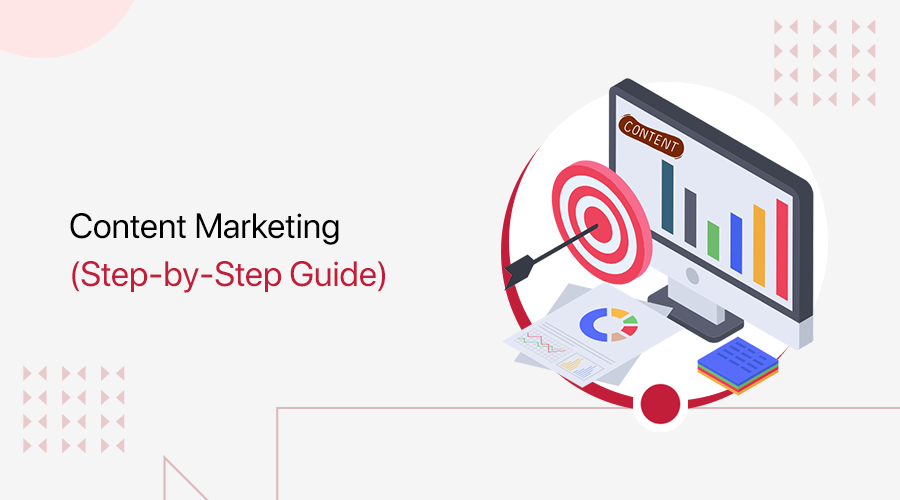
Do you want to know what content marketing is? Looking to implement a good content marketing strategy to increase your reach to new customers? Then, you’ve come to the right place.
Content marketing is a way of creating content aiming to provide information about your business, products, or services. As a result, you can achieve a good number of potential clients and customers.
However, you’ll have to make a good strategy and implement it well to make your content marketing efforts effective.
You might not be able to enjoy the benefits of content marketing without the proper tactics, tools, and approach. And for beginners, it could be overwhelming without proper guidance.
So, to help you through that, we’ve got a proper guide on what content marketing is and how to start with your content marketing strategy.
Let’s get into it.
A. What is Content Marketing?
Content marketing literally means what it sounds like. Marketing your brand and business with the use of relevant content is called content marketing.

It basically involves sharing useful content with your customers about the products you sell or the services you provide via the internet. With that, your customers can have ease in using your services. As a result, you’ll be seen as a professional, credible, and trustworthy brand.
For example, a business that sells WordPress themes and plugins can have a blog or videos giving information on how to set up and use those products.
Five Content Marketing Examples
- Infographics
- Webpages
- Podcasts
- Videos
- Books
These days, people are more into the internet and technologies. They research products before they make any kind of purchasing decision. They look for prices, pros, cons, features, comparisons, etc. of the products they want to buy. So, if you have any online setup providing information about your products, then people are likely to discover you when they search for the related products.
Content marketing focuses more on informing your customers and prospects on what your business sells and how to use your products easily. However, its long-term goal is to tell your targeted audience about your brand, make them aware of your services, and impress them to buy from you.
Comparing it to other marketing strategies like direct marketing, you don’t have to reach out to people directly. But, you need to publish your content on a proper channel for targeted audiences and entice the readers.
With that said, let’s look into the reasons why content marketing is essential for your business.
B. Why is Content Marketing Important? (6 Top Reasons)
Above, we’ve explained briefly what content marketing is and what it’s used for. Now, let’s look at why content marketing is absolutely important for your business.

I) Increase Brand Awareness and Traffic
When people see your brand’s name many times on different internet platforms for a similar niche, then they’ll recognize you as a credible brand. For that, your content plays an important role.
Suppose, you have a good website or blog where you create and publish several types of content related to your business. And, when people discover your business name several times, you’ll be known as a good brand that provides the services they’re looking for.

Other content like videos, social media posts, podcasts, etc. also works great to increase your brand awareness too. People discovering you on various other social media platforms like YouTube, Facebook, Instagram, etc. have a huge impact on your brand recognition.
II) Increase Audience Retention
Keeping your audiences entertained and retaining their attention can come off as a hard task. Especially for a starting business, keeping your audiences for a long time is both important and hard. Fortunately, content marketing excels at it.

Content marketing allows you to give out information and targeted content to your audiences while simultaneously marketing your products. If you provide good enough targeted content and provide what your audiences want, then you can easily establish your long-term audiences.
These interesting and informational contents entice your audiences and keep them entertained. You can now easily capture your audience’s attention and have them regularly come back.
III) Establish Trust with Customers
Your content marketing approaches should be focused on your customers. Meaning, your content should provide what your customers need to consume your products and services easily. If you do so, you’ll gain trust with your customers.
Moreover, if you are constantly interacting with your customers using different contents and taking their advice, you can form a good bond between your customers.

Your audiences are bound to trust you more if you are implementing their feedback and providing what they want. Focusing on creating content that solves the problems of your users will come in handy.
This also helps you increase your product quality and build trust with your customers. It’ll improve your reputation among your audiences and build a good name for your business.
Additionally, storytelling might play a good role in making your content interesting and trustworthy. So, you can include some real examples and stories if it fits the flow of your content.
IV) Generate Good Leads
Firstly, if your content is qualitative, then it has chances of getting discovered through search engines and other mediums. With that, you attract quality visitors and potential buyers. Thus, your content can help you generate leads.

Plus, with your content, you’ll have a chance of explaining what your brand does and what it’s expert on. Also, you can display the testimony of your customers to your website visitors and readers. The more your brand looks credible, the more you’ll be converting users into your customers.
Besides, you can work on answering the questions of your prospects in your content. There, you’ll have the chance of explaining that your product could be the solution to their problems, without directly pitching for the sales.
For example, if you have a restaurant, then you can create a blog on the best place to eat in the city. There, you can mention your restaurant and the services it provides. From it, people will visit your place and your sales will grow.
V) Good Return on Investment (ROI)
Content marketing brings a great return on investment to the table. It brings more site traffic, leads, and gives a boost to conversions. If you are constantly providing good content to your audiences, your conversion rate is most likely to grow higher than other marketing strategies.

Content plays a huge role in enticing your customers to subscribe to your services or buy your products. Quality content with proper marketing strategy brings in a good number of sales and leads for the business.
A consistent flow of good content and proper use of CTAs, allows you to convert your traffic to your buying customers.
VI) SEO Optimization
Having your content on top of search engine results helps you get good exposure and increase your authority and awareness. Your business can grow rapidly and attract more customers constantly with good search engine optimization (SEO).

And, content marketing is great for organic SEO. If you are consistently providing useful information to your targeted customers, then search engines like Google recognize you as a valid information source. This helps you rank higher in search results for particular keywords.
Moreover, you can easily optimize your content to rank higher in search results. This allows you to gain more customers and make your brand more visible to people.
If you want to know more, then you can check our detailed article ‘What is SEO?’
C. Types of Content Marketing and Examples
Content can be a piece of article, infographic, video, podcast, or anything. And everything you do to create and share the content with a wider audience comes under content marketing.
Hence, content marketing is a really broad concept that involves a wide range of marketing tactics. But you don’t need to excel in all of them at once. Get started with the most effective ways, and gradually learn other types too.
Here, we’ve put together the most popular and effective types of content marketing for beginners. Let’s get into it.
I) Social Media Content Marketing
Social media content marketing is a very powerful way of marketing your content and brand. It helps your content to reach a large mass of people.
If you already have content ready for marketing purposes, then you can just share them via social media. It increases your reach among your friends and followers and also gives your followers the option to further share it. This helps to rapidly increase your reach, exposure, and gather good traffic.
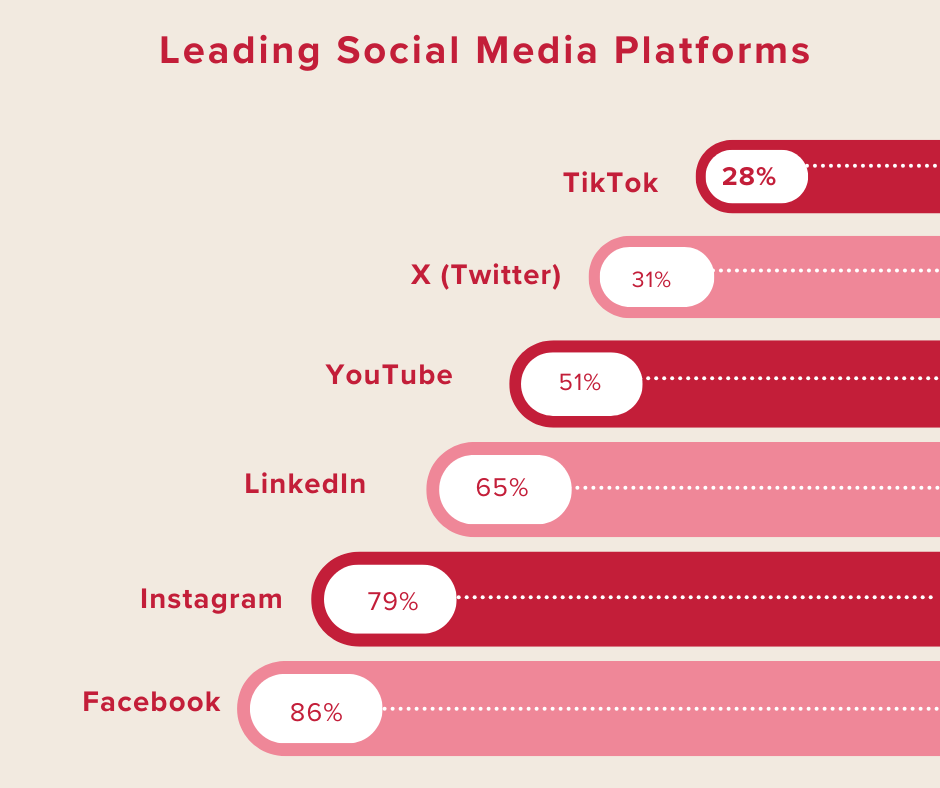
Moreover, you can also use your social media platform to maintain good relations with your customers and interact with them.
For example, you can post new updates about your business on social media. If you have got a good number of followers, then it can gain good attraction. And if your followers share it further, then it can reach even more audiences.
Although figuring out the type of content for your followers can be a hassle, the result from social media marketing is worth it.
II) Infographic Content Marketing
Infographic content marketing is a very visually pleasing way to promote and market your content. It uses good graphics, shapes, and images to attract attention from your audiences. The main advantage of infographic content marketing is that it can gather a lot of shares and inbound links.
Having a visually pleasing infographic to showcase and summarize all information helps people to get away from a block of text. It also makes the information compact but easy to look at and retain.
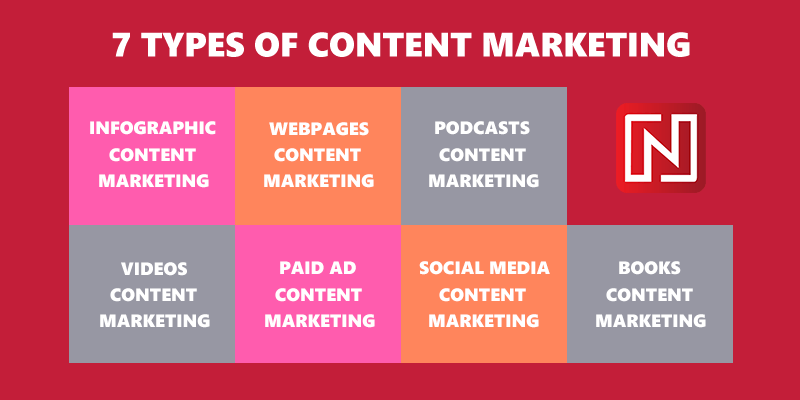
Infographics with important points and cool graphic elements are attractive. And they often gather more interactions. According to SEMrush, infographics and visual content get more shares and retweets.
Example: You can present important points about a topic or even highlight the services of your business using different graphic elements. People are more bound to share these small but informational snippets of infographics with each other. This allows you to reach more audiences and gather good traffic.
However, this doesn’t mean you need to use infographics for everything. Using infographics for compatible content at the right time allows you to increase your content quality and gather a good number of audiences.
III) Email Marketing
Email marketing is one of the most popular and effective ways of marketing your content. There are over 3.9 billion active email users around the world. This means using email to marketing your content opens up a door to a wide range of audiences.
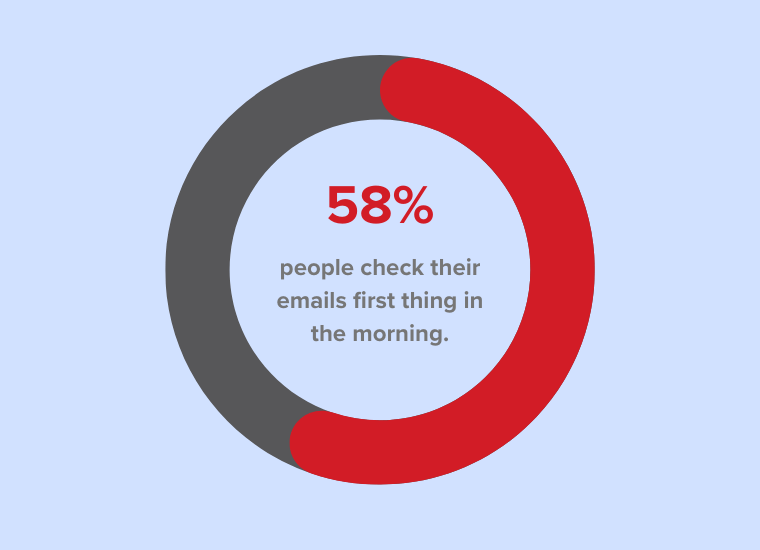
You can send out emails with attractive yet information content to entice the users to visit your business or site. You can promote and showcase your products and services. Moreover, you can also deploy an automated service to bulk send an email and gather good traffic to your site.
For more information, check out our complete guide on email marketing here.
Example: You can send out bulk emails about offers or update your audiences with new information or products. This allows customers to gain a good offer and purchase your services and products. Whereas, you can simultaneously increase your conversion rate and traffic.
IV) Blog Content Marketing
The majority of content marketing is done with the help of blogs and articles on the web. Businesses with websites and blogs also get more traffic and views.
According to SEMrush 2019 and 2020 global report, blogs account for more than 85% of content marketing and blogs with longer read get almost twice the viewers. This just shows how important blogs are to market and promote your content.
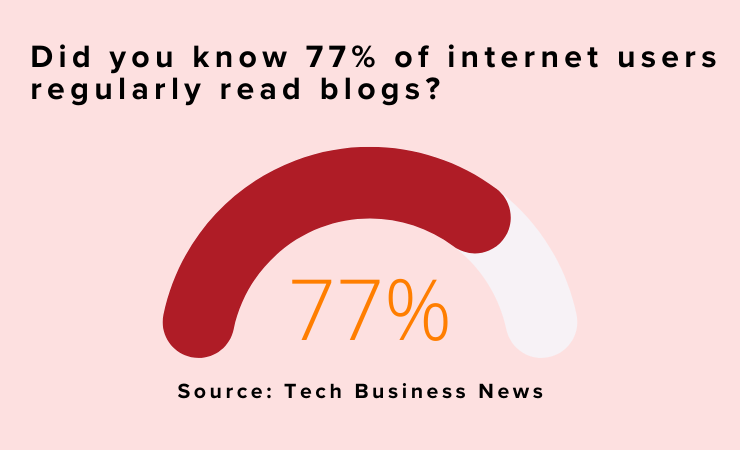
Blogging is the most effective way of marketing your content. You can not only write about your brand but also include informative articles on your products and services. This allows users to know more about your company, products, and how to use them.
You also can talk about topics other than your business and provide reliable information. This way, you can easily build trust with customers and also increase traffic. People also tend to purchase your products and services and become long-time customers after you gain their trust.
Example: You can post blogs on a variety of topics and increase interaction with your readers and gain traffic. This allows you to easily promote your products using blogs with good traffic. Your trusting audiences are also more likely to purchase services and products according to your recommendations.
V) Video and Podcast Content Marketing
Video and podcasts are growing methods of content marketing.
Although these methods can require you to do some setup and installations in the beginning, they can become very handy in the long run. Also, many digital and content marketers prefer video and podcast marketing to make informative content for their customers. As a result, they bring in a lot of good traffic, leads, and recognition to your product and brand.
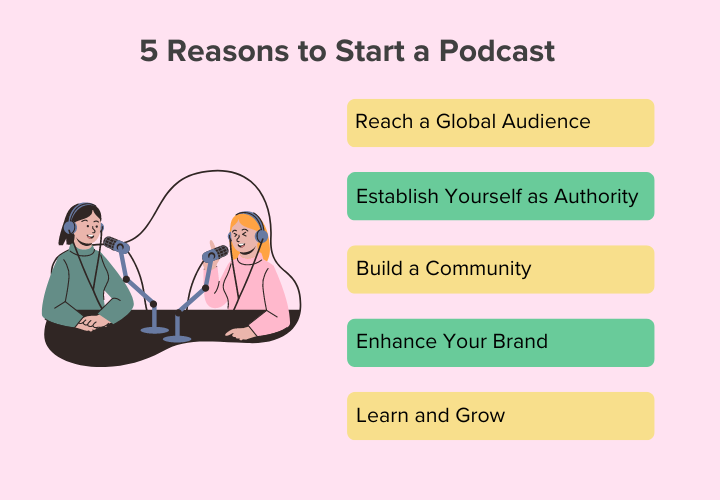
A finely planned and practiced podcast and videos can get deep into your business and talk about every aspect. It highlights every part of your business that other marketing methods might not.
You can easily bring attention to your audience by talking about your product or demonstrating it. Plus, a majority of the users also seem to enjoy videos and podcasts over other methods.
Moreover, your video and podcast contents aren’t limited to just product descriptions, you can cover product uses, tutorials, and more to interact with the customers. You can also link your sites or blogs from your videos which works great to attract more traffic.
Example: You can talk about your product uses and description on a podcast or create videos on it. You can also demonstrate how to use them, talk about their benefits, and other tips and tricks relating to the products.
D. How to Create a Content Marketing Strategy? (Step-by-Step)
Content marketing strategy is the plans, steps, and approach to building up your audience using reliable, educational, and good content. It explains how you should approach content marketing to get the best result.
Many businesses apply proper content marketing strategies to grow exponentially. However, this doesn’t mean a specific pattern of strategy will work for all types of businesses. Since every business functions differently and has different audiences, therefore you need different strategies. So, you’ll have to test and analyze what works for you the best.
Here, we’ll talk about the general steps you need to go through to create a perfect content marketing strategy for your business.
Step 1: Set Your Marketing Goals
The first step of creating a content marketing strategy is figuring out your marketing goals and missions. Knowing what you want to accomplish using the content marketing strategy will help you achieve the goals more easily.

Actually, your mission and goals should guide you to prepare your content marketing strategy. You can easily figure out your mission by noting down the answers for a couple of things.
i) Who are your target audiences?
Know who your target audience is i.e. determine which age group, gender, or ethnicity, your potential customers are. This information can help you choose effective platforms and proper types of content.
ii) What are your content ideas to reach them?
Having a particular niche-focused content makes your content more relatable to the target audience. Research what kind of content they’re interested in. What type of content are they more engaged with?
iii) What is your content’s selling point or what can you provide to the users?
People are more likely to engage and read your content if it’s helpful or provides them with some advantage. Your content should be able to help the users, solve their problems, or provide certain benefits.
Answering these questions can help you to build the base for your content marketing strategy and how to approach it. You need to set your goals with a clear idea of the above points.
Different brands, businesses, or sites can have different goals or achievements they want. The type of content and marketing strategy can also vary to achieve different sets of goals. Your typical goals for content marketing can be:
- Improving revenue
- Improving sales
- Getting more traffic
- Increasing engagement and awareness
- Ranking higher in search engine results.
Step 2: Establish Your KPIs
Having Key Performance Indicators (KPIs) helps you know your progress and indicate if you have reached your goals. Making your goals measurable help you know your business growth and achievements.

These KPIs help you track your progress and what you might need to change to achieve your goal. The basic KPIs are the milestones on your journey to achieve your goals.
These KPIs can be:
- Hitting the sales record or increasing sales by a certain number.
- Meeting the revenue target for specific periods.
- Getting more recognition and awareness.
- Improving your SEO and ranking better.
- Getting more shares, likes, engagements, and comments on social media.
- Getting more shares on your articles and contents.
- Meeting target for new viewers and customers.
Specifying different milestones in terms of numbers like sales records, customer counts and more on your goals can help you see your progress. This can not only determine your progress but also act as a motivation to achieve your goals and further grow your business.
Step 3: Know Your Audience
As we said before, you need to know your audience to grow your business and achieve your goals. You wouldn’t like to be “Jack of all trades, master of none” that has content about everything but doesn’t satisfy any particular niche.

But, understanding your audience and what they like can get confusing. However, these methods can help you get more familiar with your audience and improve your content.
i. Researching and Studying the Demographics
A good place to start to know your audience would be to research and collect different demographic data. Demographics for content marketing is the study of your audiences based on their age, gender, education, status, and more.
Web analytics and email analytics can help you pull up data about your audiences and subscribers easily. This will allow you to know basic information about your viewers. If the majority of your users fall in the 15-20 age group, then your content can be about something they prefer.
Studying these demographics will allow you to get data about your audience’s age group, ethnicity, education, gender, and more.
For example, Google Analytics segments your site viewers according to their interaction and interest. Facebook and Twitter also deploy their analytics to get demographic data on your followers.
This helps you know who your customers and followers are which can help you design the content accordingly.
ii. Checking Comments and Feedbacks
You should constantly check your previous content to see how your audiences reacted. On top of properly studying your audience’s demographic, it’s also crucial to know if your audience liked previous content.
Checking feedback and comments from your visitors on your previous content can help you know your shortcomings. Additionally, you also understand what your viewers are looking for in your content.
Moreover, asking your viewers directly about your content can also help you get a clear picture of them. This allows you to know your readers’ and visitors’ needs and interests. Going through feedbacks and comments can help you know:
- Their problems and queries.
- What they expect from your content.
- Customer requirements and interests.
- How to plan your next content.
Collecting these feedback and comments is really crucial to know your audience and what they need in your content. For example, if you post a tutorial about your product, then you can know if the tutorial helped your customers and what they want further by going through the comments. You can also know what more features customers want in the product.
iii. Creating Customer Persona
Once you have a proper study of the demographics and insight on your audiences through feedback and comments, you can create your customer persona. A customer persona is the perfect example of your ideal customers with similar needs. This is important so that you can leverage your knowledge about your audience and create better-targeted content.
A perfect customer persona with information about your consumer’s requirements, problems, interests, and sources of information can help get a better understanding of them. You can get an idea about what type of content they like and what content can solve their problems. You can also easily market your product and services by leveraging the idea.
Creating a customer persona allows you to predict how your audience will react to your content and how you can get a positive response from them.
iv. Conduct Surveys
Another way of knowing your audience is by asking them yourselves. Seems pretty obvious, right? However, many people overlook this.
Using different forms or surveys to talk about your business and service with your customers allows you to learn a lot. You can literally ask anything you want to know from your customers and put a question on the survey.
For instance, You can ask about the content they are interested in, what they expect from you, and ask what you need to change. This allows you to increase your content quality in the future and make content according to users’ needs.
Now, you can collect these results and move in the direction according to your consumers. This establishes interpersonal communication and trust with the customers. This helps you gain more traffic and produce more quality content for your visitors.
You can easily create and deploy these surveys using tools like SurveyMonkey. You can also add similar forms to your site for customers to fill. However, you might need to add enticing topics or participation compensation to encourage more customers to fill these forms.
Step 4: Decide Content Types & Channels
Having a good idea about your target audience helps you make your content more reliable. Understanding the needs and preferences of your audiences helps you target your content accordingly and you decide on what content types you should work on.
After you know your audiences, their interests, and what they are likely to like, you can decide the type of your content. For example, if the majority of your audience is into traveling, you can have content that posts frequently about new places with images and reviews.
There are different content types you can work on but figuring out what works best for you can be a hassle. Some of the most popular types of content are:
i. Blog Posts
Blogging is a crucial part of content marketing. Starting with your blog posts is super easy and it doesn’t take much time. It’s advantageous to all businesses and allows you to market your product and services.
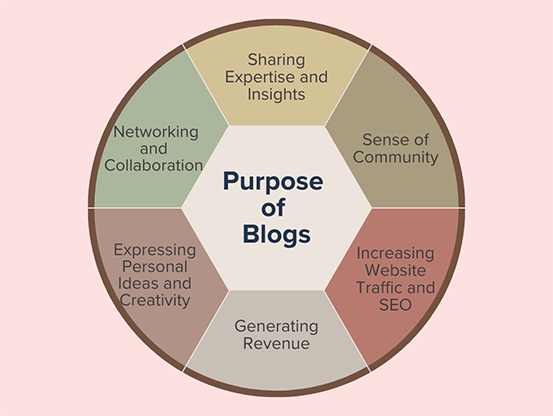
Blog posts are suitable for every kind of business and possibly every kind of audience. You can also see businesses and brands of all ranges, from small to large, adopting blogs as one of their main content channels.
Anyway, there’re various types of blogs that you can create based on your business type. Here are some of them.
- List Articles: You can create a post with a list of products that people can easily choose from. Example: 10 places to visit in Europe.
- Comparisons: Comparison makes a good type of article where you can differentiate between 2 or more products showing their feature. Thus, the readers would have ease in choosing the appropriate type of product for them.
- How-to Guides: You can create how-to guides if your product requires some knowledge to use. For example: How to install and set up WooCommerce on your WordPress site?
- Interviews: Interview articles are great for enhancing brand recognition and trust. You can interview customers, influencers, or popular figures in your related industry, and create a blog post based on it.
For setting up a blog, the basic things you need are a domain name, web hosting, and a reliable platform. These all might add up to be a little costly for you. However, if you use WordPress, you can keep the cost minimum. If you need help, then you can check how to create a blog with WordPress.
ii. Video
People are more bound to learn and remember when it’s visual information. And with the surge in the number of video-sharing platforms, you can’t deny that video contents are a popular content type for marketing.
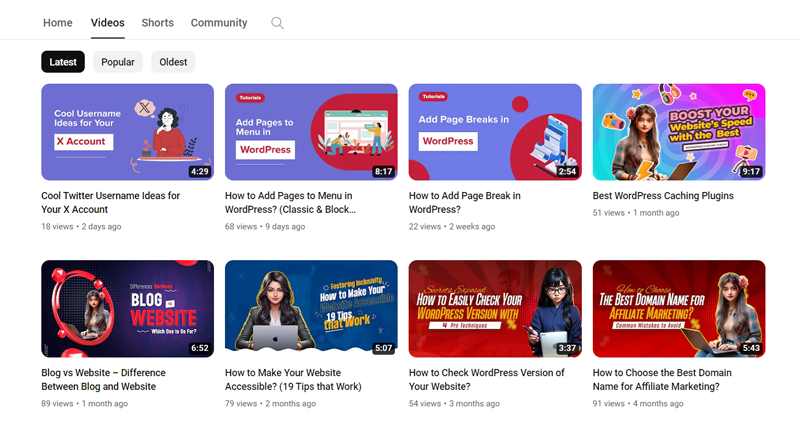
Simply, videos can be used to introduce your product or business in a nice and engaging fashion. Additionally, the use of videos could be extended to show how your product works, or how to use your services. So, depending on what you want to show, videos can be useful for every kind of business.
Now, let’s see some types of videos that businesses can use.
- Presentation: Presentations make great video content for your business. You can film a speech about your business talks and post it on social media or video hosting platforms.
- Tutorials: You can create a demonstration video for the ways of using your product.
- Product Review: You can create review videos by talking about various products and their benefits, features, pros, and cons.
- Lists: Similar to list blogs, you can list out products related to your business and make videos based on them.
- Webinar: Webinars are live events where you can talk about your business-related topics. You can also interact with the attendees and clear out their queries through webinars.
- Live Stream: Live videos can be used to display your business events happening in real-time.
Creating videos might require some editing to make them more attractive. You can use software like Windows Movie Maker, Adobe Premiere, Apple iMovie, etc. video editing. That can come with a cost.
While some types of videos like live streams are freely offered by platforms like YouTube, Facebook, Instagram, etc. You just need to have an account for that.
iii. eBooks
eBooks are getting popular as a way of marketing your content. Many marketers believe ebooks are a great lead magnet to get more potential customers.
However, publishing a good eBook can need a lot of information and your audience should be willing to enjoy the content too. Marketers use ebooks as a way to get their viewers’ emails or data in exchange for quality ebooks.

All types of businesses have been popularly using ebooks recently. It can hold any information about your business. So, your customers can have it downloaded on their devices to open and read any time they like.
To create ebooks, the first thing you need is well-written content. You can hire someone fluent in content writing, or you can do it yourself too. Then, to convert your writing to ebooks, you can take help from platforms like Flipbuilder, Pressbooks, Sigil, BookBaby, etc.
iv. Infographics
Infographics are a great content type to provide huge information in a visually pleasing way. You can add in lots of information about your product and services in small infographics at once. They are also very easy to read and easily gain attention.
You can combine infographics in various other types like blogs, videos, social media posts, etc. This would make your content more interesting.

Infographics can be important in your business if you want to represent data or content in visual form. Creating one can be challenging if you don’t have any prior experience with it. You can hire someone to do it or learn by yourself.
You can use free or premium tools like Canva, Venngage, Infogram, etc. to create beautiful infographics.
v. Emails
You can also send content over personalized emails to your prospects, leads, and clients. With the emails, you can share different ideas, details, updates, notices, and excerpts of your larger content.
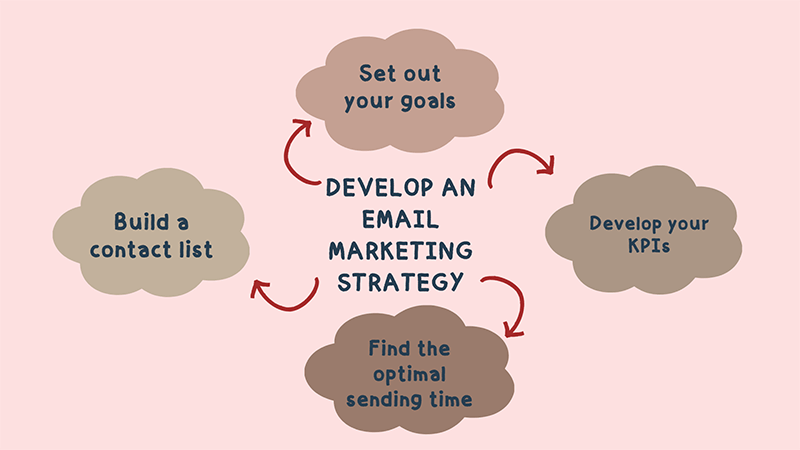
Emails help you constantly update users with newer information and also ask for their feedback. This allows you to create a trustful relation with your email subscribers.
Now, emails are too used by all kinds of businesses ranging from physical to digital product sellers, small businesses to large enterprises. It just requires having an email marketing platform to create and automate emails to thousands of your email subscribers.
How to Decide Content Types and Channel?
There are also other various content types you can choose from like:
- Checklists
- Social Media
- Podcasts
- White Papers
- Testimonials
- And more.
Although there are various types of content, choose the one that is feasible according to your needs and easily reachable to your target customers. By doing so, you can see your business having more conversions in the long run.
Therefore, you need to answer these questions before deciding on your content types.
- What are your customers looking for?
- Why choose your product or services?
- How can you help them?
Honestly answer these questions and begin with one or two channels. You can expand your content strategy gradually, step by step.
With that said, now let’s discuss how to actually create content, distribute, and market your content.
Step 5: Create Your Content
After deciding and finding out what content works the best for your business, the next step is actually to create it. You’ll have to select a perfect content channel and start publishing your content on a regular basis.
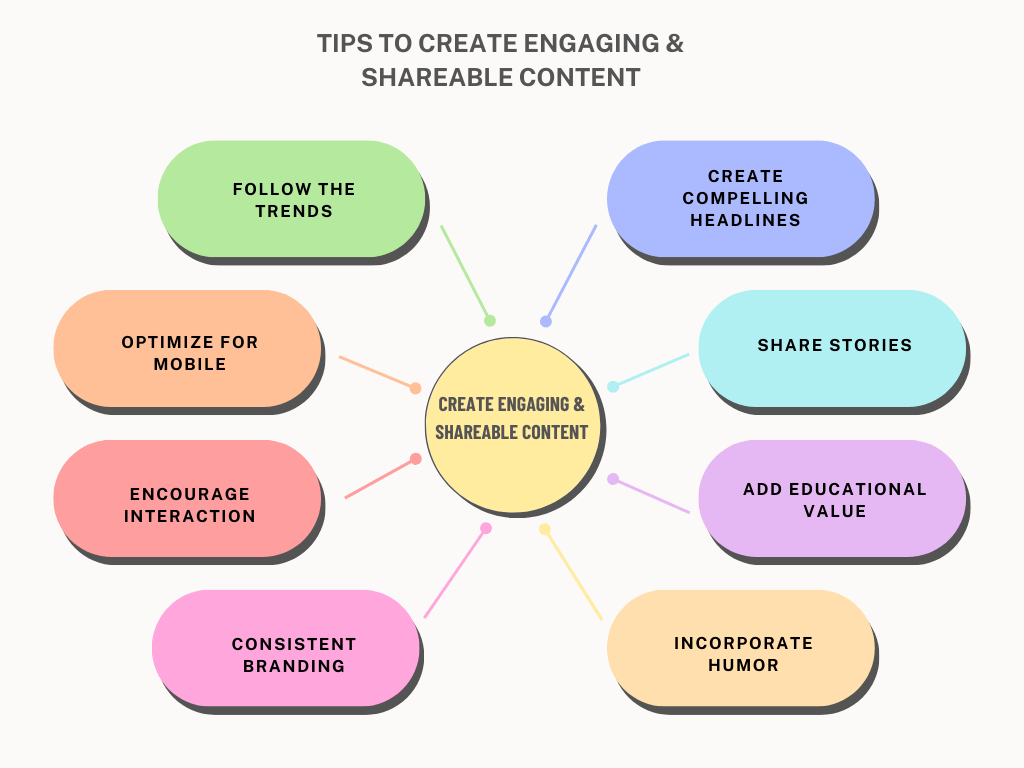
A lot of content types might work for you, but this doesn’t mean that you should start all of them right away. Instead, you should handle a few content channels at first, then later add other types as well. This will give you a chance to get familiar with what would work best for you.
If you focus on just a few content channels at first, you’ll also have a shot of providing quality on your content. As a result, you’ll have a high chance of converting.
If it’s your first time, then you can go for creating blog posts and videos. Since they’re popular and work for all businesses, it might work for you too. So, let’s see how to create them.
1) Creating a Blog
A blog is simply an online setup that lets you publish written content so that readers can access it. There are several types of blogging platforms you can adopt. Some are website builders, some core blogging platforms, some CMSs, and some networking sites.
Among them, the WordPress CMS is one of the best options out there. It’s an open-source platform that lets you create a customized blog with lots of themes and templates. Plus, the availability of thousands of plugins lets you add any function you want.
Now, see how you can create a blog with WordPress.
i. Get Domain Name, Hosting, and Install WordPress

A domain name is the unique name of your blog that helps people to identify and reach your blog. While web hosting is the space where you’d store your entire blog in a remote location called a server. For more details, check out our domain vs hosting article.
For your ease, most web hosting companies like Bluehost, GoDaddy, etc. provide both domain name and web hosting as a package. So, if you buy from them, it’ll be a very simple process. Or else, you can look for the domain names from the best domain name registrars.
After you get your domain and hosting, you can install WordPress on your web hosting account. It’s really easy as most web hosting services offer one-click WordPress installation directly from their dashboard.
ii. Design Your Blog
On installing, you’re provided with your WordPress login details via mail. So, log in to your WordPress site using the provided details.
There, you’ll reach your dashboard from where you can manage and regulate your WordPress site. Also, you get to choose free themes from there that would make your blog look good. There are thousands of them available, so you can choose which you see fit for your niche.

Then, you can personalize your blog by customizing your theme to your desired settings. The themes offer lots of customization settings you can use. Plus, if you can work well with codes, you can tweak your site design even more.
iii. Add Blog Content
Next, you can go start adding content to your blog. You can add both pages and posts with WordPress. But, remember that you’ll have to add your content as posts. For that, go to Posts > Add New.
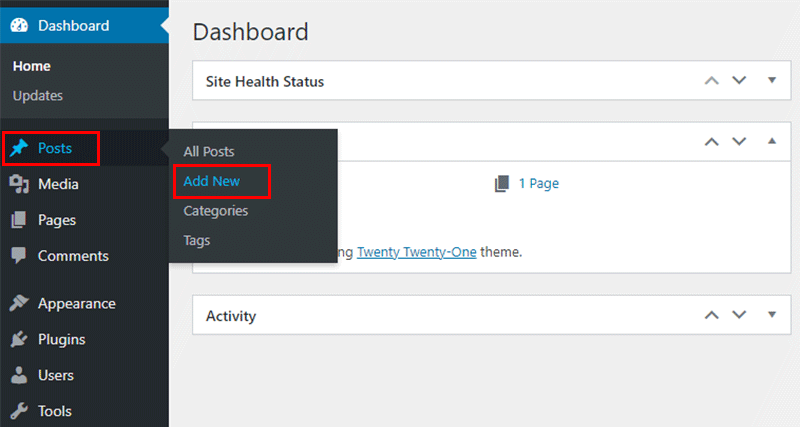
By default, you’ll have a block editor (Gutenberg) active on your post creator, which is pretty easy to use. You can add various content like text, images, videos, tables, widgets, etc. as blocks. You can also drag and drop items in different positions you like.
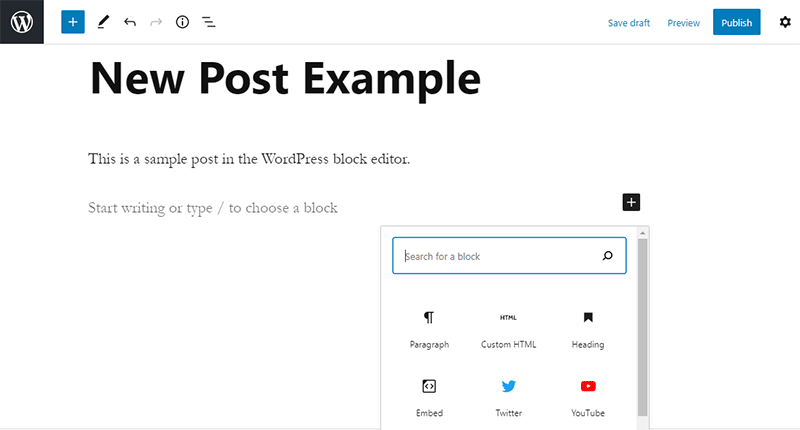
After done, you can publish your content by clicking on the Publish button.
2) Uploading Videos on YouTube
YouTube is the world’s largest video hosting platform. It’s been used by various organizations and businesses to showcase their video content.
The best part is that YouTube is a free platform for anyone. You just need to have a Google account to create a YouTube channel.
So, let’s see how to upload videos to YouTube. Here is the process involved.
i. Creating Videos
You’ll have to decide what you want to upload on YouTube depending on your business and customers’ needs. Anyway, if you’re fluent yourself, then you can record and edit your videos to make them look better. Or, you can hire a professional to do that.
YouTube also allows you to create live videos, so you can do it too.
Some of the software to create and edit your videos are Canva, Crello, Wondershare Filmora, Corel, CyberLink PowerDirector, etc.
ii. Creating a YouTube Channel
First, log in to YouTube with your Google account. After that, go to settings from your left sidebar, and then click on Create a New Channel.
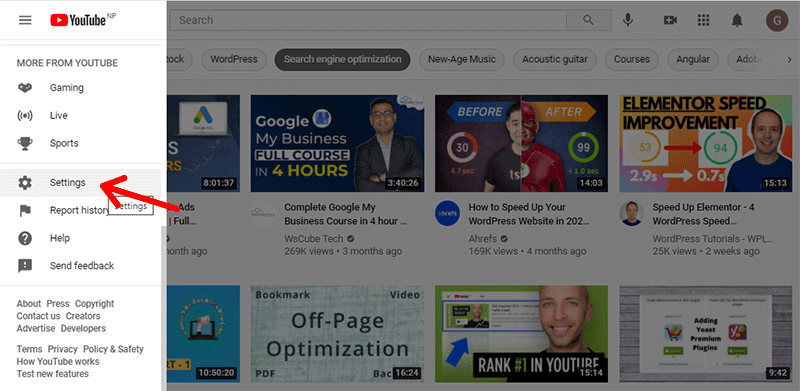
On the next page, you can type in the name of your YouTube channel. Then, tick on the confirmation box, and then click on Create. Then, you’ll have your YouTube account created successfully.
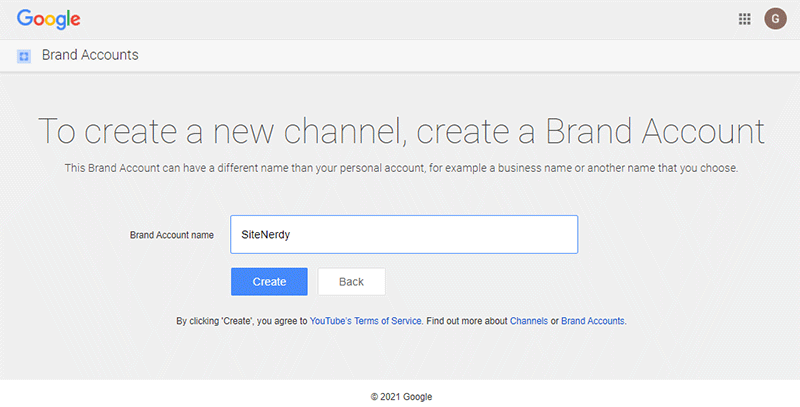
You can complete basic setup tasks like uploading pictures, cover photos, descriptions, linking social profiles, etc. After saving, you can move ahead to upload your video.
iii. Uploading Videos
To upload a video on YouTube, go to your channel icon and click on YouTube Studio.

After that, click on Upload Video on the next page. Then, a box will appear from where you can choose a video to upload from your local device.

After that, you can enter the video title, description, thumbnail, age restrictions, etc. at first, then click on Next.
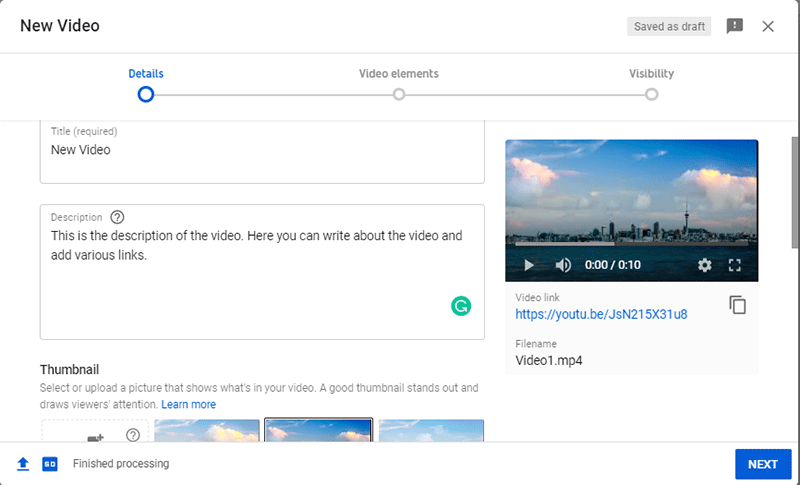
Then next, you can set suggestions for other videos at the end. But, you can skip this step and click on Next. Then, you can choose to publish it right away or schedule it. You can also set the video public, private, or unlisted.
That’s all you’ll have to create and publish videos on YouTube.
Step 6: Distribute the Content
After your content is ready and published, the next step is to make it reach your customers and prospects.
You can use various other marketing channels like social media, SEO, etc. to increase reach. You can also use your personal connections with your customers for your content growth and marketing.
Here’re some of the ways to do that.
- Share your content on social media.
- Optimize your blog for SEO.
- Embed your videos on your website/blog.
- Use email to send your content to your newsletter subscribers.
- Encourage your viewers to subscribe to your YouTube channel.
This way, you can create content and share it via different online channels.
But that’s not the whole task on your plate as a marketer. There’s yet another important task which is to track your results. We’ll explain how in the next step.
Step 7: Analyze and Measure Results
After you’ve successfully created your content channel, you’ll have to analyze how well your content is performing. You’ll always have room for improvement so that you can make more useful content, drive more traffic, and increase sales.

Here are some points to explain the importance of analyzing your content marketing results.
- Understand your customers: Your content can be helpful to understand your customers even more. The demographic data like age, location, etc. of the content viewers helps you know what type of customers are more likely to be interested in your products.
- Improvement: Analyzing helps you know if certain types of your content need improvement. Additionally, the users’ feedback and engagement help you improve even more.
- Helps you choose the right content channel: Measuring results helps you know which content platform is gaining more visitors and converting more. So, you can focus on the channel that’s been more effective in your business growth.
Now, you might think about how you can analyze and measure your content marketing results. There are lots of analytics tools that can help you analyze your marketing results. So, let’s talk about some of them.
We’ve mentioned your blog and videos as your important content types. So, we’ll include the major analytics tools for the two.
1. Google Analytics
Google Analytics is a free tool provided by Google that helps you track and analyze your website’s blog data. It tracks the number of traffic, customer interaction, engagement, etc. It basically helps you understand what things are performing well and what is not.
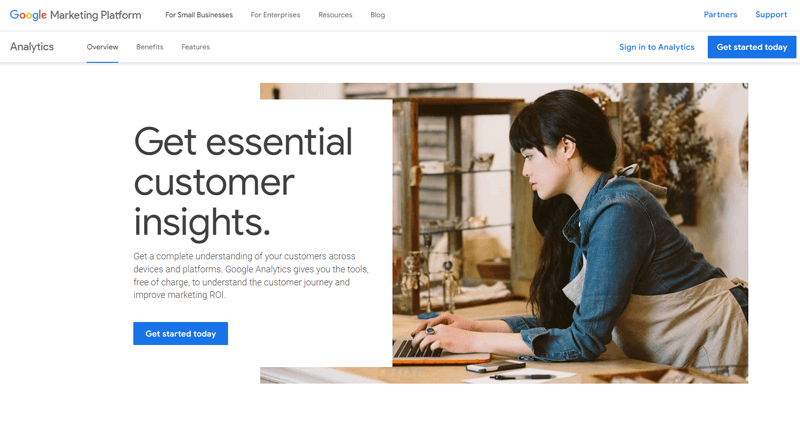
In summary, Google Analytics is an important tool for your content marketing success. Some features of Google Analytics are:
- It tracks the number of visitors by various factors like page, date, hours.
- You can find the source people come to your website (like search engines, social sites, referrals, URLs, etc.)
- It lets you track the visitors’ age, gender, geography, browser, interests, and so on.
- You can also analyze how many audiences convert to your buying customer.
2. Moz
Search engine ranking is an important factor if you want your blog to reach more people. So, if you want to analyze your search rankings, then Moz is a tool for you. Moz helps you monitor the ranking of your site on Google and other search engines for certain keywords.

Some other features of Moz are:
- Helps you discover the right keywords
- Competitive analysis (you vs your competitors’ ranking)
- Review backlinks and find backlink opportunities
3. YouTube Studio Dashboard
It’s the tool provided by YouTube to analyze your YouTube data. It’s attached to your YouTube channel so that you can measure your results easily.
You can view your YouTube video performance results at a glance and also view in-depth data. You can view overall channel analytics with total views, subscribers, views, and watch time of the last 28 days.
Plus, here’re some of the analytics features provided by YouTube.
- Views, average watch time, total watch hour, and estimated revenue of each individual video.
- See stats based on date and time.
- Offers graphs for showing the growth of views and subscribers with time.
- Shows how many users your videos are reaching them and the way of reaching them.
- Shows impressions, click-through rates, along with the viewer funnel.
E. Content Marketing Tactics
For your content marketing strategy, you should implement some tactics to make it work even better. So, here’re some of the content marketing tactics that you can implement to achieve great success.

i. Guest blogging
Guest blogging or guest posting is a popular strategy that bloggers and SEO specialists use. It’s the technique where you write content for another company or blog with mutual agreement.
Writing for another blog a win-win situation for both parties. It’s because the blog will be getting content for free, and you get to advertise your company on other’s sites/blogs.
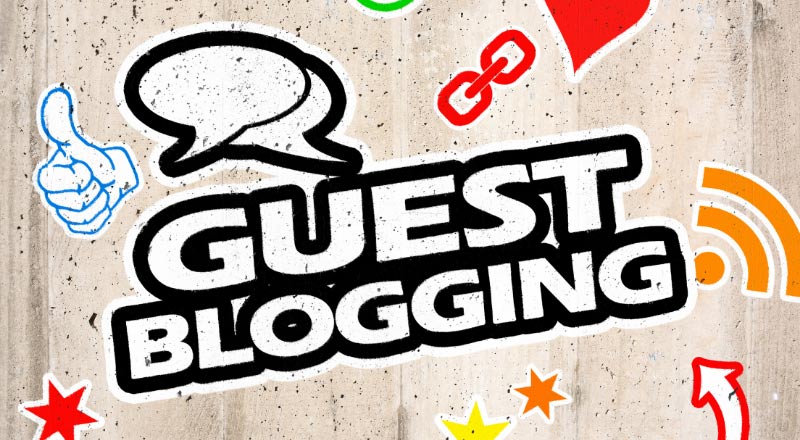
Aside from that, if you guest post on others’ blogs, then you can add some links to their website. Those links are called backlinks. And, the backlinks provide a way for people to visit your blogs.
Plus, Google recognizes backlinks as a quality factor for site ranking, so will help your blog rank higher in Google. You can know about it more from our SEO (Search Engine Optimization) guide. However, you shouldn’t over-do it, because it violates Google’s ranking guidelines and could penalize you.
ii. Gated content
Gated content is premium content that can be accessed by only a certain type of user, like registered users. It’s highly effective for collecting emails because you’ll encourage users to provide their email address in exchange for exclusive content.
You can set a gated content by creating a form that users have to fill before accessing the content. There, you can have fields for information that you want your users to provide.

This can be important in so many ways for a business. From the information users provide, you can observe what your ideal customers look like. From that, you can create your buyers’ persona effectively.
Also, with gated content, you get the email address of your prospects to which you can sell your products through email marketing.
iii. Targeted Landing Pages
Targeted landing pages are the web pages that can convert your audience and prospects into buying customers. These pages contain detailed information on the products that you want to sell. Plus, it has most focus on selling the product rather than providing helpful users to users.
If you want to create a good landing page, then start with designing your page to look more attractive. It should have an enticing header and title. Then, add points focusing on the benefits of the products, and highlight the important ones. Plus, good visual elements can be more effective for attracting visitors.
Landing pages are sure to improve sales and other conversions, which is the ultimate goal of your content marketing efforts.
iv. Fear of Missing Out (FOMO)
Fear of missing out (FOMO) is a psychological term used to explain that you might be missing something in your lack of presence or immediate action. In marketing, you can use FOMO to appeal to your prospects to pick special offers and deals. It can be applied to your content marketing strategy too.

For example, if you own a retail store selling laptops, your content channel could be visited by someone interested in buying one. In the meantime, if you can deliver a lucrative limited-offer deal on a laptop which the user won’t want to miss.
Implementing an effective FOMO tactic requires you to plan it thoroughly. You’ll have to set a deadline for the opportunity, add testimony, bundle products with mark discounts, etc. Moreover, you write motivating text like ‘don’t miss out the chance…’, ‘for first 100 buyers’, etc.
These are some tactics that can help your content reach more audiences and improve your conversion rate. If you want it to grow, even more, you can use some of the content marketing tools which we have listed below.
F. 5 Best Content Marketing Tools
Having the right content marketing tools can help you create a better marketing strategy. You can find tons of tools according to your purposes. Here’re some of the best ones that you can use.
1. Buzzsumo
Buzzsumo is a multipurpose tool that’s useful for a multitude of content marketing tasks. Basically, it’s for managing, organizing, and analyzing your content. It fetches and analyzes tons of content and provides the analysis to help you with planning your content.
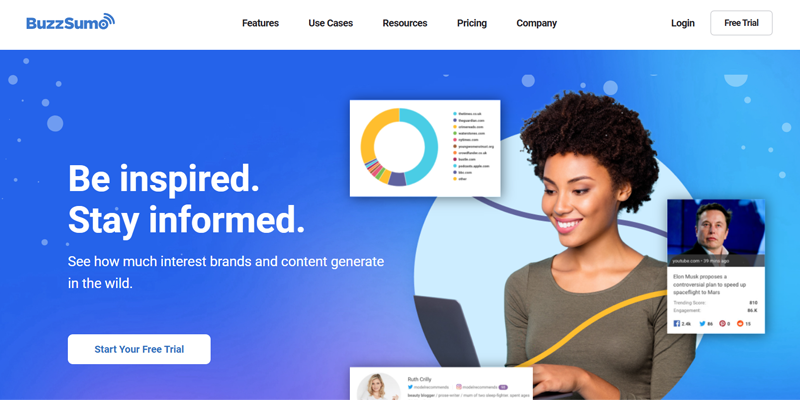
You can search for a keyphrase and Buzzsumo comes up with the most popular and recently published articles on that topic. Also, you can find influencers and publishers creating the most popular content in your similar niche.
Now, let’s see some of the features of Buzzsumo.
- Allows collaborating with your team members
- Generate content ideas based on a term
- Shows trending topics
- Find out what people are asking on Quora, Reddit, Amazon, etc.
- Analyzes metrics like backlinks, social shares, etc.
2. Evernote
Evernote is a powerful note-taking and organization tool that helps users store, manage, and retrieve information efficiently. It allows you to capture ideas, create to-do lists, and keep all your notes in one place for easy access.

This tool is perfect for content marketers, writers, and professionals who need to organize their thoughts, research, and projects in a structured manner. Evernote syncs across devices, ensuring that your notes are always accessible.
Some features of Evernote are listed below.
- Create and organize notes with text, images, and audio.
- Sync notes across multiple devices for seamless access.
- Use tags and notebooks for better organization.
- Search notes using keywords, even in scanned documents.
- Collaborate with teams by sharing notes and workspaces.
3. Mailchimp
Mailchimp is a tool that marketers use for email marketing. It can be used for creating emails, sending bulk emails, and automating email delivery. It provides user-friendly tools to create emails from lots of templates to send to your subscribers.
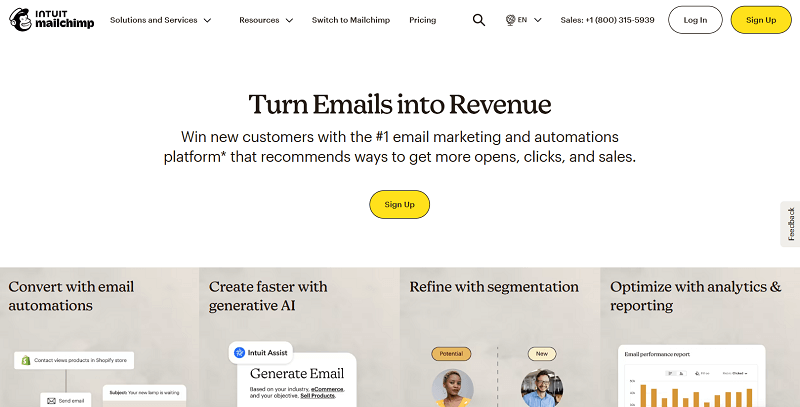
It’s a freemium tool i.e. has both free and premium versions available. With the free version, you can send 12,000 emails and have a list of 2,000 subscribers. Plus, you can have up to 200,000 contacts and send unlimited emails.
Some Mailchimp features are listed below.
- Used to analyze your email campaigns.
- Offers tons of email templates to create customized campaigns
- A/B testing for improving email delivery, open rates, and conversion rates.
- Also offers tools for social media management
- Have features to the integration with other tools
4. OptinMonster
OptinMonster is the lead generation software used by bloggers and digital marketers. It can be used to grow your email list, improve conversions, and increase sales.
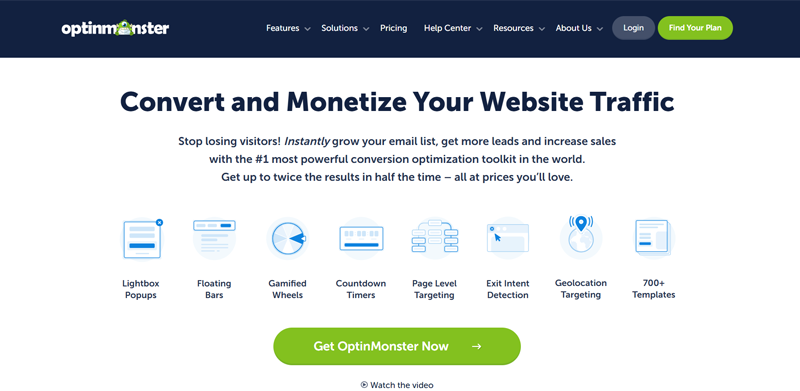
With OptinMonster, you can create forms and pop-ups to capture emails that you can utilize for email marketing. It offers a huge number of pop-up templates so that you can design emails according to your niche.
Now, let’s see some of the features of OptinMonster.
- It lets you create full-width popup welcome pages.
- You can add a floating bar at the page bottom.
- Offers features to create exit-intent pop-ups for more conversion.
- Access to analytics for monitoring the results.
5. Semrush
Ranking higher in search engines play a vital role in reaching your content to more audience and business growth. And, Semrush is one of the best tools that you can use.
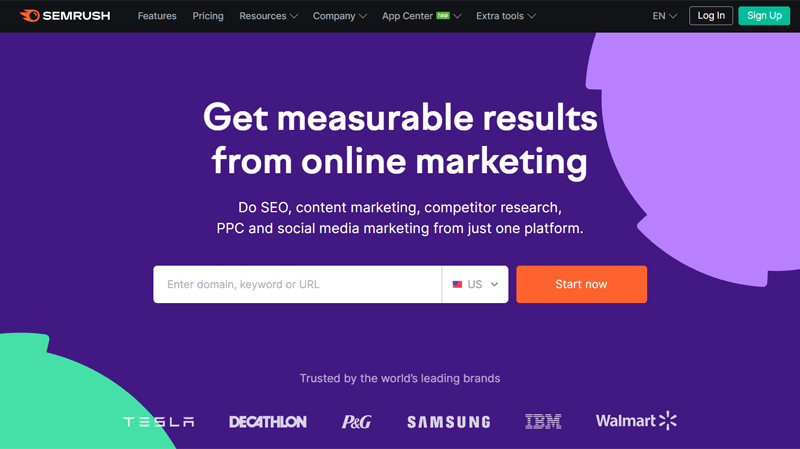
Semrush is a tool that helps you optimize your site to rank higher in major search engines like Google. It offers various tools for finding out the appropriate keywords for the content that you want to rank.
Besides, below are some of the other features of SEMrush.
- Detailed keyword research feature for finding keywords based on search volume, keyword difficulty, etc.
- Track and audit the number of backlinks.
- Site auditing feature for finding issues on your content.
- Analyzes your domain for checking its quality and authority.
Those are some of the best content marketing tools that can be of benefit to improving your content creation and strategy.
G. Frequently Asked Questions on Content Marketing & Creating a Strategy Guide For It
1. What is content marketing?
Content marketing is the process of creating and sharing valuable content to attract and engage your target audience. It helps businesses build trust, increase brand awareness, and drive sales without directly promoting a product or service.
2. Why is content marketing important?
Content marketing is important because it helps you reach the right audience, builds credibility and trust, improves SEO and website traffic, increases customer engagement, generates leads and sales, and more.
3. What are the main types of content?
You can create content in different formats, such as blog posts and articles, social media posts, videos, infographics, ebooks and guides, email newsletters, and more.
4. How to create a content marketing strategy?
Start by setting clear goals and understanding your audience. Choose content formats and platforms, create a content calendar, optimize for SEO, and promote through social media and email marketing. Regularly analyze performance and adjust your strategy.
5. What are common content marketing mistakes?
Not having a strategy, ignoring audience needs, poor SEO, inconsistent posting, lack of promotion, and failing to track results can all limit success. A clear, data-driven plan is essential.
6. How can small businesses benefit from content marketing?
Small businesses can use SEO, social media, and repurposed content to grow their reach affordably. Engaging, valuable content helps build credibility, attract customers, and drive sales.
Conclusion
This concludes our article ‘What is Content Marketing?’
We hope you liked this article and understood it well. We also hope that you can create a successful content marketing strategy by following the easy steps we provided.
If you have any further questions, confusion, or suggestions about content marketing, then you can write in the comment box below. We’ll get back to you soon.
If you want to grow your business more with digital marketing, then you might want to check our articles on social media marketing and affiliate marketing. Or, you can check the comprehensive guide on the overall aspects of digital marketing from our site.
Lastly, you can visit our pages on Facebook and X to get our latest updates.
